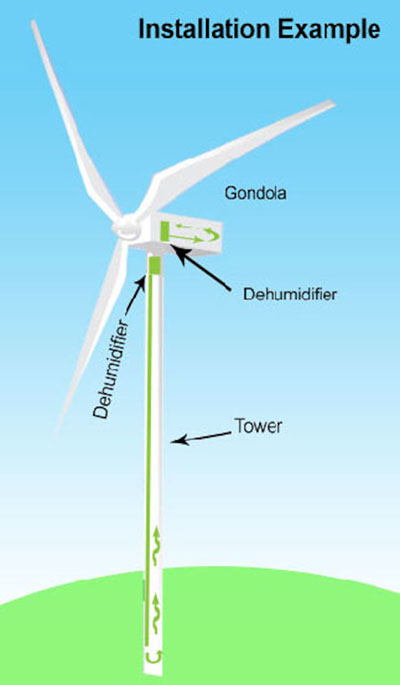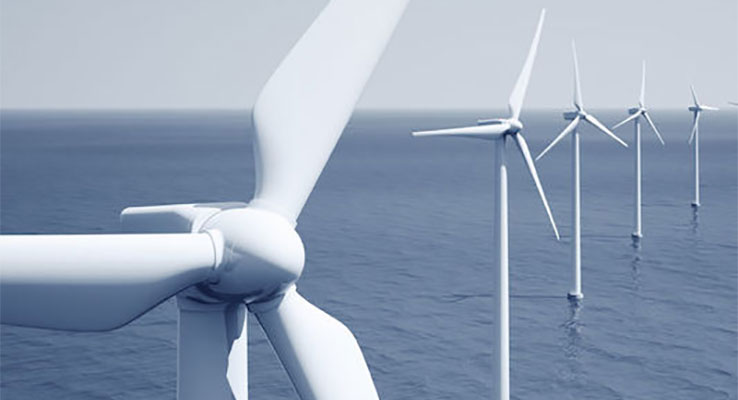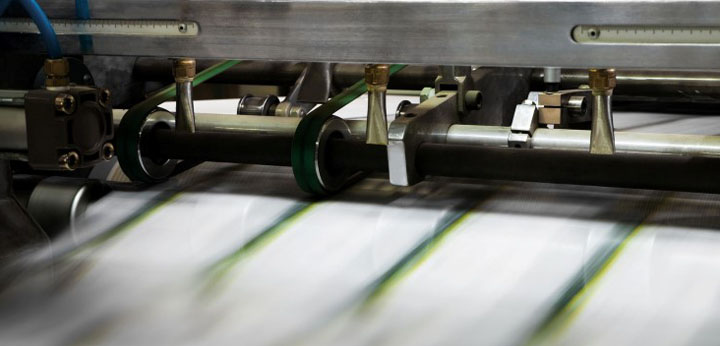
Wind Turbine Dehumidification
Continuous operation without condensation and corrosion.
Munters have assisted consultants, engineers and managers involved in the planning, operation and design of wind turbines to understand the application of desiccant dry air within the wind turbine.
One problem is the special climate required and understanding the influence of high humidity in the tower and machinery. Natural ventilation systems provide insufficient protection against condensation and the subsequent corrosive effects of high humidity. In offshore wind turbines, the problem is exacerbated due to the necessary closed nature of the turbine subjected to year round aggressive offshore conditions resulting in condensation effects.
The culprit is high humidity especially at sea, effecting the tower and the nacelle machinery area eg on doors, walls etc. during periods of stand still or breakdown. During daily cooling of the outside air or weather changes, moist air surrounding cold surfaces reaches the dew point and condensation forms which can then drip onto plant parts. Corrosion and humidity induced moisture puddles on the equipment can result in electrical and electronic short circuits in the switching equipment. Munters desiccant dehumidification systems supply dry air to the tower and machinery areas resulting in dry trouble-free operation, and increased longevity of machinery, walls and tower structures. Maintenance work on machinery and costs for repair are greatly reduced, enabling operators to recoup the investment in the desiccant system very quickly.
Munters dry air systems can be applied at two levels;
Firstly the tower is kept dry ensuring no moisture or condensation effects are experienced throughout the ascent.
Secondly, in the turbine machinery nacelle, the whole machinery component area is dehumidified and protected against condensation and corrosion, from production phase to installed on site.
Munters Desiccant Drying Systems
Munters dehumidifiers work by passing the moist air through a slowly rotating desiccant wheel (rotor) which has a very large surface area. The desiccant drying rotor is impregnated with solid adsorbent material which dries the air containing moisture, so that the resulting air passed back into the tower and the machinery area is dry.
A second air stream within the desiccant dehumidifier passes through a separate sector of the rotor and the absorbed water is driven of the rotor and discarded outside the turbine. The moisture adsorption and regeneration of the drying wheel enables continuous dehumidification with consistently high quality.
Munters have supplied numerous systems within the wind turbine industry and is a reliable partner, with an international network of in-house engineers enabling you to access our wind turbine know-how and competence.



